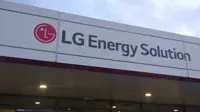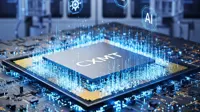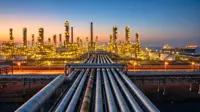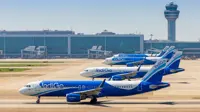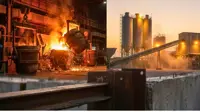CRISIL Ratings' update: STATE BANK OF INDIA
07 Apr 2006

CRISIL's interactions with SBI have revealed that SBI had taken measures to keep its branches open on the first two days of April. However, since other banks were not working on those days, some investors were unable to present their cheques for realization on these dates. Such cheques are yet to be cleared, and the corresponding principal and interest payments have therefore not been credited.
CRISIL believes that this delay does not reflect financial inability or unwillingness to pay on SBI's part. In CRISIL's opinion, the current scenario is akin to a force majeure event and hence does not indicate any change in the inherent credit quality of SBI.
CRISIL's ratings on the debt instruments of SBI ('AAA/Stable' on Tier II Bonds and 'P1+' on certificate of deposits) continue to reflect the bank's dominant position in the Indian banking sector, with a share of around 20 per cent of total banking sector deposits. SBI's dominance is reinforced by the integration of its associate banks and subsidiaries with itself. This makes the bank extremely important for India's economy and financial system. SBI's strong franchise gives it access to a steady source of stable retail funds, which constituted around 59 per cent of the bank's total resources as on March 31, 2005.
SBI's return on assets (Profit after Tax/Average Assets) has been consistent at around 1 per cent over the past 3 years. SBI is adequately capitalised, with a Tier I capital adequacy ratio of 8.04 per cent and a large capital base of Rs. 240.72 billion as at March 31, 2005. The bank has considerably improved its net worth coverage for net non-performing assets (NPAs), the same being at 4.4 times as at March 31, 2005, due to reduced slippages reflecting improving asset quality across the banking sector. However, the bank continues to have a high level of gross NPAs at 5.95 per cent of gross advances as at March 31, 2005, compared with an aggregate figure of 5.2 per cent for all scheduled commercial banks in India.
Latest articles
Featured articles

Hariman Sharma lets apple travel to India’s warmer climes
10 Feb 2025
Apple, which was the preserve of the cooler Himalayan region in India, is now everywhere – in the East, the West and the South - thanks to one enterprising Himachal farmer, Hariman Sharma.

The cost of neglecting water transport
03 Feb 2025
Inland water transport is widely recognised as a cheaper and environment friendly mode of transport and, as per a report prepared by RITES

Crypto Currencies Trying To Undermine Global Financial System
27 Jan 2025
US President Donald Trump, it seems, is the latest to join the frenzy for personal or corporate currency, with $TRUMP, or what they call a meme coin, giving a further boost to his crypto image.

As costs of saying final goodbyes rise UK families resort to crowdfunding to pay for funerals
By Axel Miller | 16 Jan 2025
The cost of saying a final goodbye to loved ones in the UK has reached a grim new high, leaving families grappling with unexpected financial burdens.

The life and times of Manmohan Singh, former Prime Minister of India
By Cygnus | 28 Dec 2024
On 27th December 2024 India and the world lost one of their finest statespersons in a hundred years. Manmohan Singh, born on 26th September 1932, in Gah, Punjab (now in Pakistan)

The remarkable Ratan Tata
By Kiron Kasbekar | 23 Oct 2024
One newspaper report of Ratan Tata’s passing away showed an old photo of him climbing into the cockpit of a Lockheed Martin F-16 fighter.

Lighter than air, yet very, very powerful
By Kiron Kasbekar | 03 Jan 2024
In March 2013 Chinese scientists pulled off a remarkable feat. They created the world’s lightest aerogel. Tipping the scales at a mere 0.16 milligrams per cubic centimeter – that’s a sixth of the weight of air!

COP28 explained: A closer look at COP28's climate change solutions
By Aniket Gupta | 27 Dec 2023
The 28th United Nations Climate Change Conference, also known as COP28, took place from 30th November 2023, to 13th December 2023, at Expo City in Dubai, United Arab Emirates.

What is a Ponzi scheme?
By Aniket Gupta | 06 Dec 2023
Ponzi schemes have long captivated the public imagination, drawing unsuspecting investors into a web of illusion and deception.
Business History Videos

History of hovercraft Part 3...
By Kiron Kasbekar | Presenter: Kiron Kasbekar

History of hovercraft Part 2...
By Kiron Kasbekar | Presenter: Kiron Kasbekar

History of Hovercraft Part 1...
By Kiron Kasbekar | Presenter: Kiron Kasbekar




